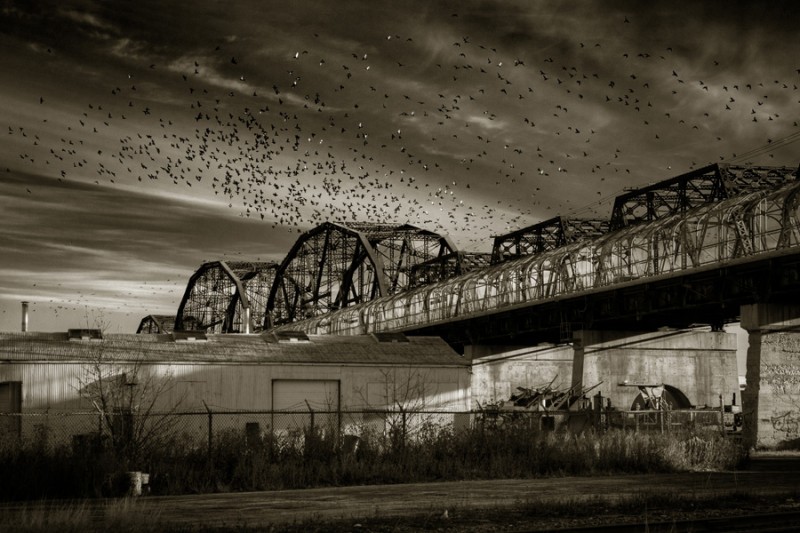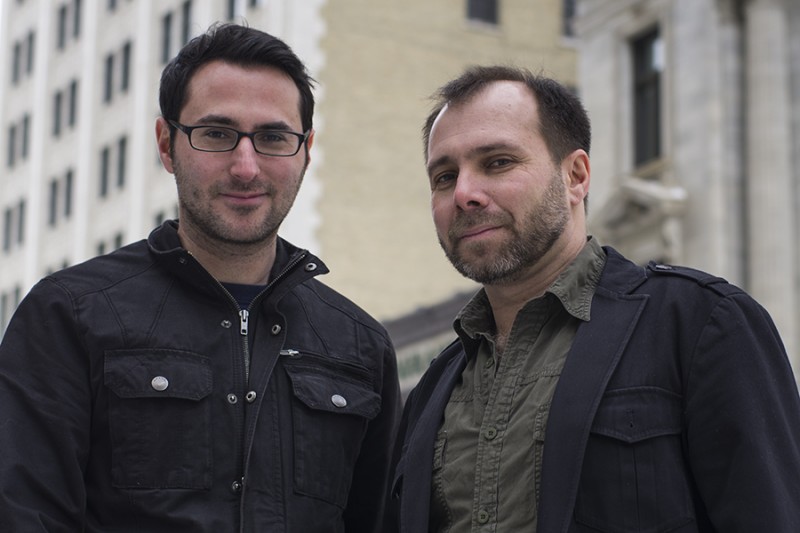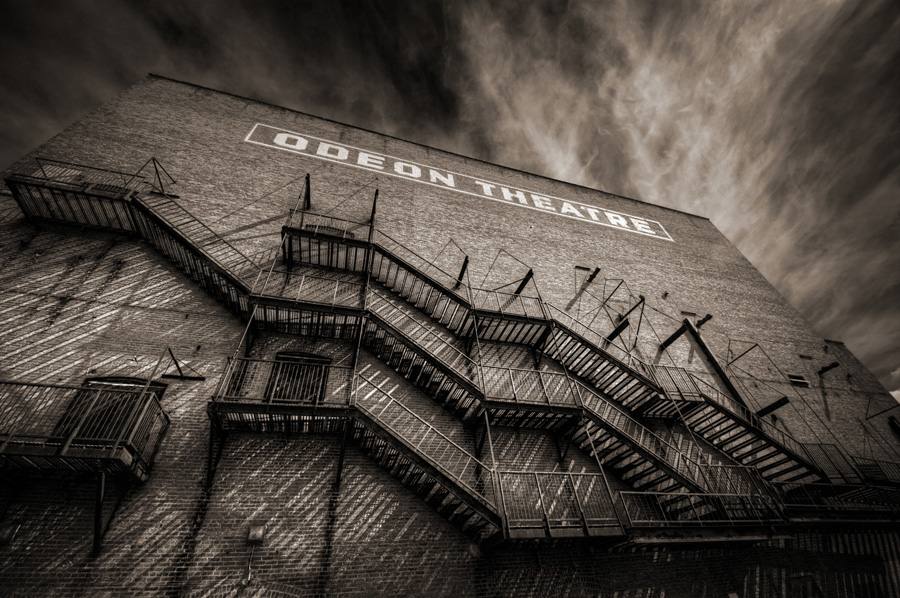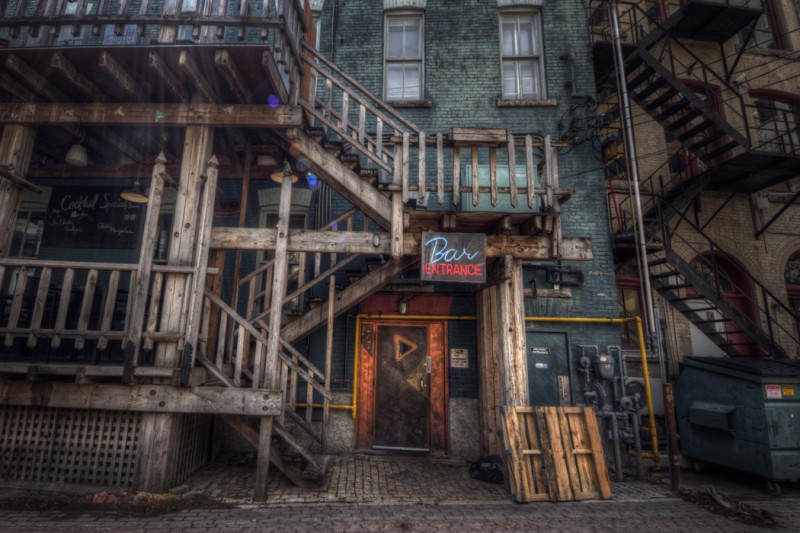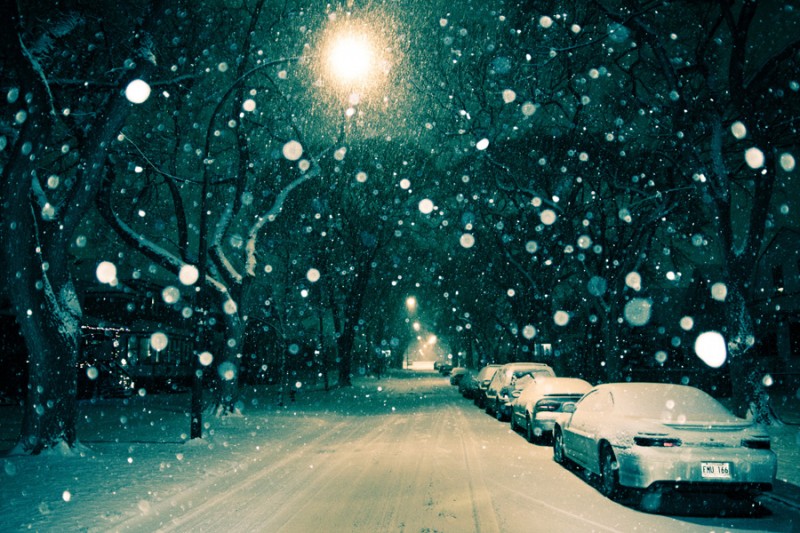
Albert Street, photo by Bryan Scott.
Winnipeg: Love it, hate it
Stuck in the Middle is a new book of Winnipeg photographs by alumnus Bryan Scott
The new book of Winnipeg photos by alumnus Bryan Scott and journalist Bartley Kives highlights more of the love-hate relationship we have with our city, which turns 140 years young tomorrow.
It took some time for Scott to realize the photographic potential in his own back yard. It used to be the case that he would take photos only while on vacation. Now the pastime that began 10 or 11 years ago — finding the best places in Winnipeg to document in photos, “rediscovering the city” — has become a “borderline-obsession,” he says.
Scott, who’s been “making images of one kind or another” since he was a kid, graduated from the U of M with two degrees, one in film studies and another in environmental design. Both helped him develop his photography skills.
Though it wasn’t his plan at the time, the degrees trained his aesthetic eye, he says. Both are “largely theoretical [degrees],” and he thinks of environmental design as a program that provides a “well-rounded education.”
Scott self-published a book of photos from his popular blog Winnipeg Love Hate a number of years ago (the blog also includes many shots of the U of M campus) but the current project has been a bit of a departure for him. The recent collaboration between Scott and Kives came about when Kives, a fan of the blog, inquired whether Scott was interested to work together on a project.
They shared an attitude towards their subject matter, an ambiguity that Scott recognizes as common for Winnipeggers in relation to their hometown.
Scott says the idea came from Kives, who was ready to do a second book after his first, called A Daytripper’s Guide to Manitoba.
“I was thrilled to hear from him,” recalls Scott. “I’d thought that if I do another book, I would want to work with a writer, whereas the first book was just photos. And I also thought that if there was anyone in Winnipeg that I would like to work with, it was him.
“So it was perfect. I was thrilled. He’d done a book; he had a publisher and I felt confident that the idea we pitched would be approved — and it was.”
The book’s been approved by more than just the publisher. The launch, which took place this past Sunday, was so jam-packed that Scott didn’t see many of the friends who said they were there. It went better than he ever could have imagined, he says.
“And Bartley’s text is amazing. There are so many historical nuggets, historical facts about Winnipeg. And this really wry humour that kind of comes out of left field…. [T]here are quite a few laugh-out-loud moments.”
How did the two of them select photos from the more than 4,000 on his website? Kives focused on the shots that piqued his writerly interest, says Scott.
For his part, Scott wanted to pick those that were “good photographs in their own right, not just good photographs of Winnipeg.”
He picked his favourites, including those that showcased some of his preferred subjects, such as Winnipeg’s “architectural wonders” (also one of the chapter titles), neon signs or handpainted wall ads in the Exchange District. The book is divided into more themes, such as “Things that we destroyed.”
“I haven’t been doing [photos of Winnipeg] for that long,” Scott explains. “But when you look back at the photos, there are so many things that we’ve demolished or that have burned down. Or where something has gone wrong.
“There’s also a whole chapter on things we tried to destroy, but for whatever reason, couldn’t,” he laughs.
(Scroll down for more photos and a Q & A with the authors.)
Related:Musician John K. Samson, who wrote the forward to Stuck in the Middle, tells us what’s to love about this city
Q + A with Bryan Scott and Bartley Kives
Bryan Scott
What is it about photography that is uniquely able to capture Winnipeg in all its grit and glory?
Scott: Photographs don’t lie. Even when they are treated in Photoshop, they still reveal the years of grit and grime, the textures, colours and personality of the city.
Can you describe a couple of photos that stand out for you, and tell us why?
Scott: My panorama of Albert Street is one photo that epitomizes Winnipeg. It was taken in 2008 prior to the destruction of the Albert Street Business Block by fire. In its place now is an empty lot, which has slowly over time become Winnipeg’s newest parking lot. Meanwhile, on either side of this new lot stand two empty, dilapidated historic buildings – The Royal Albert Hotel and The St. Charles, both of which run the risk of falling victim to demolition by neglect. The photo captures the spirit of Winnipeg’s glory days and at the same time, suggests its unfulfilled potential
Bartley Kives
Bryan Scott mentioned that the book was your idea. What inspired it?
Kives: Two years ago this month, I was looking at Bryan’s excellent photo blog, Winnipeg Love Hate, where he posts captivating and intriguing pictures of the city. At the time, it had been five years since the initial release of my first book, A Daytripper’s Guide to Manitoba, and I was thinking about another book project.
I called up Bryan and asked him if he’d consider working together. He told me he always wanted to work with a writer and thought of me in particular. So it wasn’t the world’s most difficult sales pitch.
I thought up the idea of a coffee-table book for people who don’t like coffee-table books, which tend to be too reverent. I wanted something real – something funny and honest that would truly capture Winnipeg’s weirdness.
And here it is. Like magic … two years later.
How did you collaborate on the book?
Kives: Bryan had about 4,500 images on his computer. He whittled those down to about 400 of his favourites and then we whittled those down further into favourite images and images that would help tell stories about Winnipeg. We also drove around during the summer of 2012 taking a few additional shots.
We then organized about 225 photos in different themes – the chapters you see in the book. I wrote one essay per chapter and also wrote all the cutlines. The work essentially wrapped up in January of this year. Working with Bryan is easy – he’s very organized.
Can you describe one photo that you especially enjoyed writing about?
Kives: On page 126, there’s a picture of the Yellow Warehouse on Main Street, caught in the midst of demolition. The writing on the wall says “If you don’t see, ask, we may have it.” Now we don’t see this structure at all. I like the not-quite-subtle poignancy of Bryan’s work.
(Scroll down for more photos)








